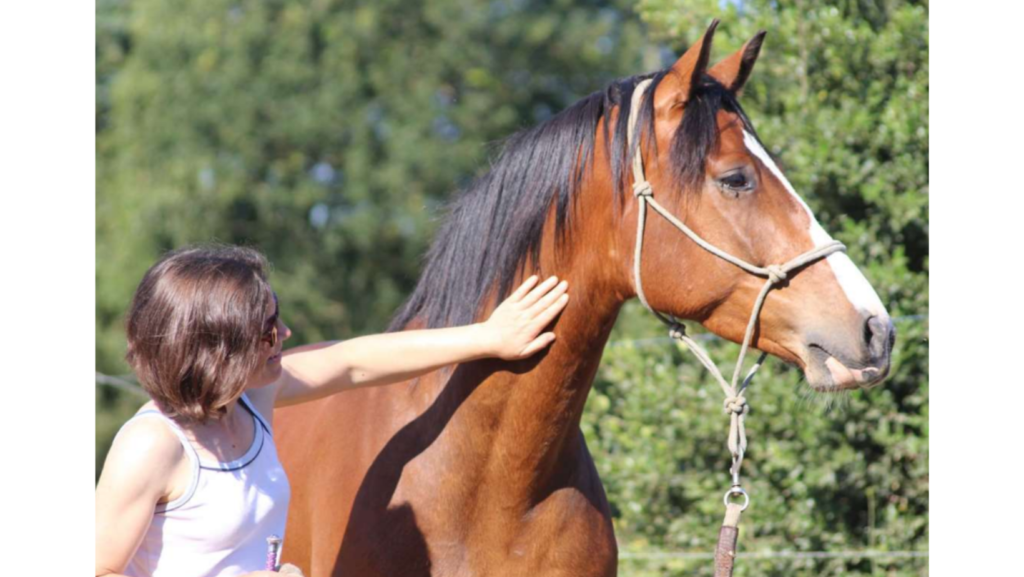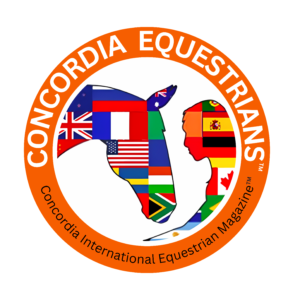DRESSAGE RULE CHANGES 2023
By veterinarian Eva Van Avermaet DVM – Founder of the Collectif pour Les Chevaux
This article is published in Issue 7 of the CONCORDIA INTERNATIONAL EQUESTRIAN MAGAZINE – the current issue and archived issues are free to download and read online.

The Fédération Equestre Internationale (FEI) rules have been changed several times over the past few years, and I think this quote from Colonel Christian Carde head of the Ecole Nationale d’Equitation et du Cadre Noir de Saumur 1991 – 1999, perfectly explains the reasons for that:
“The rule book was adapted to the evolution of the current practice by removing what was too difficult for the majority of riders or too inconvenient for those who seek to make dressage more popular and therefore a flourishing business.”
The most important rules – written to ensure correct training and thus to ensure the protection of the horses’ mental and physical health – have recently become only ‘guidelines’. This gives the impression that the FEI finds there is no need anymore to avoid hyperflexion, or no need to trot, piaffe, and passage maintaining a correct diagonalisation, and no need to show a correct square halt where the horse stands attentive, engaged, motionless, straight and square with the weight evenly distributed over all four legs – while maintaining a light and soft contact with the athlete’s hand and the neck raised with the poll as the highest point and the nose line slightly in front of the vertical. There seems to be no need anymore to show a halt for at least 3 seconds, throughout the salute.
The FEI seems to find it is not necessary anymore to lengthen the frame in extended trot or canter, nor to exhibit correct balance, relaxation and so on.
How convenient for most of the high-level riders, who are no longer capable to follow these rules.
How convenient for most of the judges, who judge without sticking to their rules.
How convenient when we can clearly point out that even the FEI World Champion of dressage is no longer capable of showing the exercises according to the rules. Sorry, ‘guidelines’…
“The rule book was adapted to the evolution of the current practice by removing what was too difficult for the majority of riders or too inconvenient for those who seek to make dressage more popular and therefore a flourishing business.” Colonel Christian Carde
Whatever the intention of the FEI was, making this important part of the rules merely ‘guidelines’ is not a step in the right direction towards horse welfare nor towards the maintaining of the Social License to Operate, even if in their document ‘The present Rules for Dressage Events, 26th edition, effective 1st January 2023’ some very important basic rules are still rules, and not just ‘guidelines’:
“… at all times the welfare of the Horse must be paramount.”
- “Welfare of the Horse must never be subordinated to competitive or commercial influences.”
- “Horses must only undergo training that matches their physical capabilities and level of maturity for their respective disciplines. They must not be subjected to methods which are abusive or cause fear.”
- “Tack must be designed and fitted to avoid the risk of pain or injury.”
- “Abuse of a Horse using natural riding aids or artificial aids (e.g. whips, spurs, etc.) will not be tolerated.”
We can also still find these important paragraphs in the rules:
“Reasons for Elimination”
“5.1 Lameness”
- “In a case of marked lameness, the Judge at C informs the Athlete that they are eliminated. There is no appeal against this decision.”
“5.2 Resistance”
- “Any resistance which prevents the continuation of the test longer than twenty (20) seconds is punished by Elimination. However, resistance that may endanger Athlete, Horse, Officials or the public will result in elimination for safety reasons earlier than within twenty (20) seconds.
- This also applies to any resistance before entering the Dressage arena.”
The paragraph about bleeding from the mouth and flanks is also still there, as is this one :
“5.7 Other Reasons for Elimination”
- “5.7.1 Horse and Athlete combination not being able to fulfil the requirements of the level.”
- “5.7.2 The performance is against the welfare of the Horse and/or shows abusive riding.”
These rules have been there for quite a while, but they are rarely ever applied, due to a very free interpretation of the terms ‘abusive riding’, ‘resistance’, ‘not being able to fulfil the requirements of the level’, ‘pain’, ‘lameness’ and ‘welfare’ – horse welfare is clearly not paramount in the majority of the current high-level FEI dressage tests.
And let’s not forget the huge problem of the stewards not enforcing their rules in the warm-up arenas, leaving the horses without protection against abusive riding there as well.
This article is published in Issue 7 of the CONCORDIA INTERNATIONAL EQUESTRIAN MAGAZINE – the current issue and archived issues are free to download and read online.
